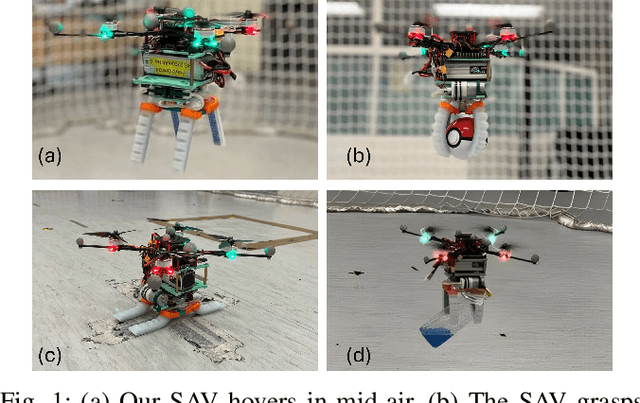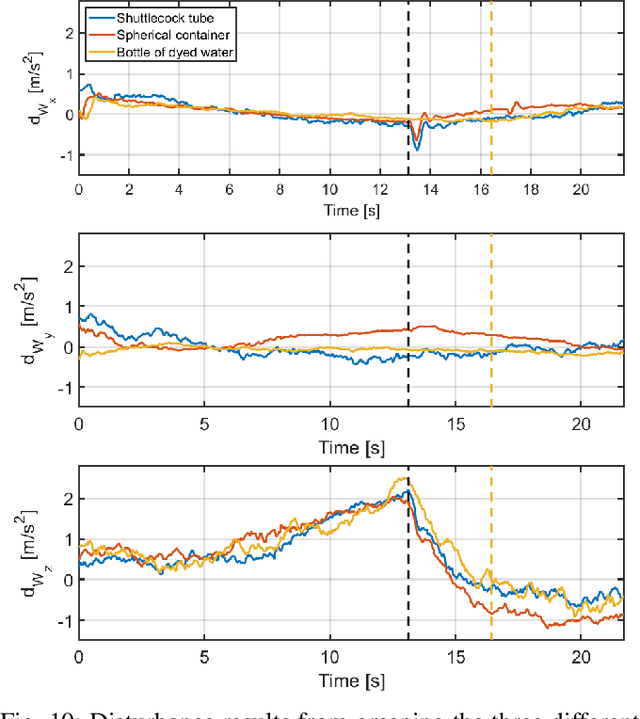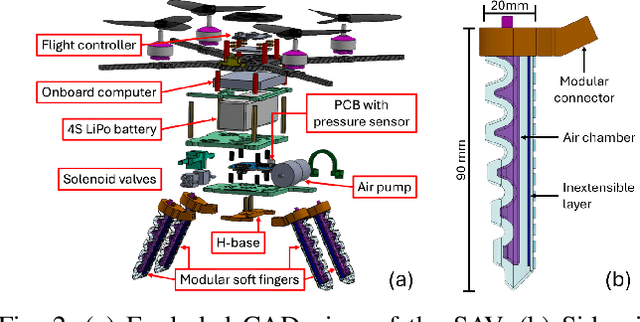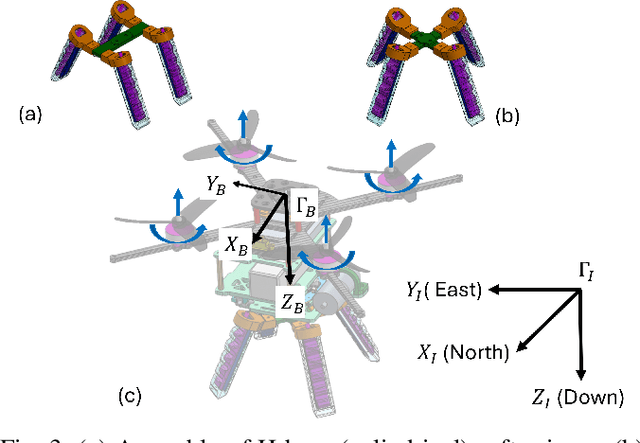Bailun Jiang
Aerial Grasping with Soft Aerial Vehicle Using Disturbance Observer-Based Model Predictive Control
Sep 21, 2024



Abstract:Aerial grasping, particularly soft aerial grasping, holds significant promise for drone delivery and harvesting tasks. However, controlling UAV dynamics during aerial grasping presents considerable challenges. The increased mass during payload grasping adversely affects thrust prediction, while unpredictable environmental disturbances further complicate control efforts. In this study, our objective aims to enhance the control of the Soft Aerial Vehicle (SAV) during aerial grasping by incorporating a disturbance observer into a Nonlinear Model Predictive Control (NMPC) SAV controller. By integrating the disturbance observer into the NMPC SAV controller, we aim to compensate for dynamic model idealization and uncertainties arising from additional payloads and unpredictable disturbances. Our approach combines a disturbance observer-based NMPC with the SAV controller, effectively minimizing tracking errors and enabling precise aerial grasping along all three axes. The proposed SAV equipped with Disturbance Observer-based Nonlinear Model Predictive Control (DOMPC) demonstrates remarkable capabilities in handling both static and non-static payloads, leading to the successful grasping of various objects. Notably, our SAV achieves an impressive payload-to-weight ratio, surpassing previous investigations in the domain of soft grasping. Using the proposed soft aerial vehicle weighing 1.002 kg, we achieve a maximum payload of 337 g by grasping.
Hybrid Aerodynamics-Based Model Predictive Control for a Tail-Sitter UAV
Dec 22, 2023Abstract:It is challenging to model and control a tail-sitter unmanned aerial vehicle (UAV) because its blended wing body generates complicated nonlinear aerodynamic effects, such as wing lift, fuselage drag, and propeller-wing interactions. We therefore devised a hybrid aerodynamic modeling method and model predictive control (MPC) design for a quadrotor tail-sitter UAV. The hybrid model consists of the Newton-Euler equation, which describes quadrotor dynamics, and a feedforward neural network, which learns residual aerodynamic effects. This hybrid model exhibits high predictive accuracy at a low computational cost and was used to implement hybrid MPC, which optimizes the throttle, pitch angle, and roll angle for position tracking. The controller performance was validated in real-world experiments, which obtained a 57% tracking error reduction compared with conventional nonlinear MPC. External wind disturbance was also introduced and the experimental results confirmed the robustness of the controller to these conditions.
A Modular Pneumatic Soft Gripper Design for Aerial Grasping and Landing
Nov 01, 2023Abstract:Aerial robots have garnered significant attention due to their potential applications in various industries, such as inspection, search and rescue, and drone delivery. However, the ability of these robots to effectively grasp and land on objects or surfaces is often crucial for the successful completion of missions. This paper presents a novel modular soft gripper design tailored explicitly for aerial grasping and landing operations. The proposed modular pneumatic soft gripper incorporates a feed-forward proportional controller to regulate pressure, enabling compliant gripping capabilities. The modular connectors of the soft fingers offer two configurations of the 4-finger soft gripper, H-base and X-base, allowing adaptability to different target objects. Furthermore, when deflated, the gripper can function as a soft landing gear, reducing the weight and complexity of aerial manipulation control and enhancing flight efficiency. We demonstrate the efficacy of indoor aerial grasping and achieve a maximum payload of 217 g for the proposed soft aerial vehicle (SAV), with the weight of the soft drone being 808 g.
 Add to Chrome
Add to Chrome Add to Firefox
Add to Firefox Add to Edge
Add to Edge